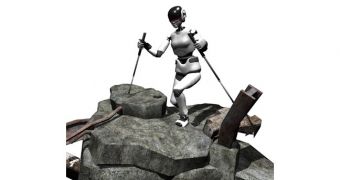Smart technology is the rave of the world at the moment, but a pair of Stanford researchers are taking the concept of smart technology into seldom-sailed waters: that of walking poles. All for the sake of robotic science, of course.
Robots are a strange industry. There are plenty of industrial automation robots, used in manufacturing, but they, like most others, can perform only one specific task or two.
Attempts at creating humanoid robots like The Terminator or otherwise intelligent machines that can move under their own power have met limited success.
Either the robots look strange, or they don't try to emulate human proportions at all. And those who do manage to gain some locomotor capabilities are usually remote-controlled somehow.
There are robots with artificial intelligence and limited self-control as it were, but they are few and far between. And they still have an issue: problems when trying to walk around or over obstacles.
Essentially, no humanoid robots have been created with a walking ability better than that of a human toddler. Clearly, this is one field of science fiction that does not lend itself to easy application in practice.
Two researchers from Standford are proposing a highly unusual solution: walking sticks. Well, hiking poles, but they're, in the end, the same thing, only with a fancier name and look.
Going by the names of Oussama Khatib and Shu-Yun Chung, the two scientists have devised what they call “actuated smart staffs.” And it seems that their usefulness in keeping balance is only part of their role.
The staffs would be equipped with force and vision sensors that would let them extend or shorted based on how rough the terrain is. All in all, bipedal robots would become SupraPeds (quadrupers or tripeds).
The staffs are supposed to make up for robots' lack of tactile sensing. Task-specific controllers that combine info from multiple motion and camera sensors are, of course, being used, but the two Stanford scientists believe smart staffs could help regardless.
The smart staffs, if they ever get acknowledged as a viable robotic technology, are meant to easily integrate with any humanoid robotic platform. The bots would still be unable to act totally independently, reliant as they are on human operators, but they will be closer than ever.
And if visual data is combined with haptic feedback properly, the ones controlling the robot remotely could experience the texture of the environment and external forces. It would allow them to intuitively adjust for surrounding forces, thus maximizing balance.

 14 DAY TRIAL //
14 DAY TRIAL //